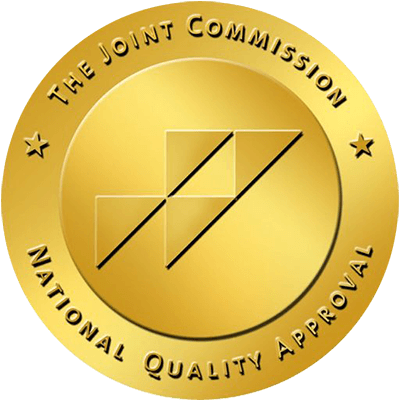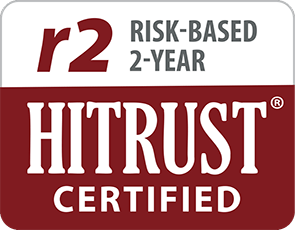Written by Ashley Kane,
Brightside Health
8 Minute Read

Medically reviewed by:
Mimi Winsberg, MD
Chief Medical Officer
10 Minute Read

Xanax is a medication commonly prescribed for those who experience anxiety and panic disorders. As a fast-acting anti-anxiety medication, people may seek Xanax as a quick fix for their symptoms. However, antidepressants and therapy can be a safe alternative to Xanax and a more effective treatment.
Before digging into the Xanax alternatives, though, a quick reminder that medical advice from a qualified mental health provider is always your best source of information about your treatment program.
If you are experiencing anxiety, depression, or other mental health concerns, Brightside Health is here to help. We can connect you to a therapist, or to a medical provider that can help you reduce anxiety and get feeling better.
Want to speak 1:1 with an expert about your anxiety & depression?
What is Xanax?
Xanax, or alprazolam, is a prescription medication that is part of a class of medications called benzodiazepines. Benzodiazepines all have a basic chemical structure that increases the activity of the neurotransmitter gamma-aminobutyric acid (GABA). This transmitter inhibits the activity of neurons, essentially slowing down the brain and the nervous system.
While Xanax is known to offer fast relief to many people who struggle with conditions like panic disorder or generalized anxiety disorder, it is known for being highly habit-forming and for causing an unfavorable amount of negative side effects for many people.
Side effects of Xanax
The FDA now requires a boxed warning on all benzodiazepines to improve safety outcomes. The most common side effect that comes with Xanax is daytime grogginess and fatigue because of the ways in which it slows your central nervous system.
There is a long list of additional side effects associated with Xanax, some of which include:
- Forgetfulness
- Trouble concentrating
- Drowsiness
- A feeling of sadness or emptiness
- Clumsiness or unsteadiness
- Shakiness
- Difficulty speaking
- Lack of appetite
- Loss of interest
Alcohol can also intensify the side effects of benzodiazepines, so it’s important to avoid drinking while using them. On top of that, Xanax can increase the risk of life-threatening problems when used in conjunction with certain other medications.
Additionally, because Xanax increases the activity of GABA, neurons adapt to the presence of the drug and become underactive when withdrawn. As a result, it is common for people to develop a physical dependence on Xanax and other similar medications over time.
Alternatives to Xanax
While Xanax can be an effective route for treating the immediate symptoms of anxiety, there are safer alternatives to benzodiazepines that can be used to help with conditions like anxiety or panic disorder.
It’s important to remember that the best type of anxiety medication is the one that works for you. You will want to discuss all of your options with your psychiatric provider, who can make recommendations and adjustments based on your unique needs.
Generally, antidepressant medications are just as effective and can be more effective in the long term. These medications can treat depression and anxiety, which is helpful since symptoms of both commonly occur at the same time, making them a good substitute for Xanax.
Antidepressants, such as selective serotonin reuptake inhibitors (SSRIs), work by blocking the absorption of released serotonin across neurons. Serotonin is a neurotransmitter that helps regulate things like mood, sleep, and emotional response. By stabilizing levels of serotonin passed across neurons, these medications may help decrease feelings of anxiety and regulate mood swings—making them effective in managing symptoms of depression.
Commonly prescribed Alprazolam alternative antidepressant medications used to help with anxiety include Zoloft (sertraline), Prozac (fluoxetine), or Lexapro (escitalopram).
It’s worth noting that while antidepressants usually take a few weeks before noticeable results, they are much safer to take in the long term compared to benzodiazepines. Another type of medication used for anxiety is buspirone, in a class of medications called anxiolytics.
Sometimes, Xanax is used as a sedative to help with sleep problems. If you have insomnia, you may want to talk to your provider about a Xanax substitute like trazodone to help aid in sleep. It is a melatonin receptor agonist, which helps to balance chemicals in the brain. It has recently been approved for long-term use, so it is safer and likely to come with fewer side effects when compared to Xanax.
Non-medication alternatives to Xanax
If Xanax is being used to treat anxiety-related disorders, a much safer and equally effective natural alternative is therapy. The most effective, evidence-based therapeutic technique for anxiety disorders is cognitive behavioral therapy (CBT), in which individuals record, examine, and analyze their own thoughts, feelings, and behaviors to find more effective alternatives to engage with in the future. Over time, they build skills and develop better responses to stressful and anxiety-inducing stimuli.
Using therapy in addition to medication for anxiety disorders is proven to give you up to a 60% better chance of recovery as opposed to just one treatment alone.
For short-term relief from feelings of anxiety, opt for natural alternatives such as developing and maintaining helpful self-care habits, eating nutritious foods, and exercising regularly. Exercise helps release endorphins and increases the availability of neurotransmitters. It can also help support good sleep, which can simulate some of the sedative effects of Xanax.
Additionally, if you are having trouble calming down without Xanax, mindfulness practices, such as grounding and breathing exercises, can help provide immediate relief by bringing you back to the present moment.
The 3 3 3 rule for anxiety
Here’s one grounding technique for calming anxiety symptoms, called the 3-3-3 rule:
- Look around you and name three things you can see.
- Listen and name three things you can hear.
- Move three parts of your body.
If you experience insomnia and want an alternative treatment that may work as successfully as Xanax, CBT is often also used. At Brightside, we encourage our members to use the Unified Protocol, an evidence-based treatment based on CBT.
Can you stop taking Xanax safely?
Since Xanax and other benzodiazepines such as Ativan are habit-forming and can lead to physical dependence, you should take some precautions when deciding to stop using them. Be sure to talk with your provider about how you can decrease your dependence and manage withdrawal symptoms safely.
Withdrawal symptoms are different for everyone, but Xanax withdrawal may include headaches, blurred vision, tremors, sweating, anxiety, panic, loss of appetite, and insomnia. In severe cases, it may lead to seizures or heart palpitations.
To ease withdrawal, the dose is typically reduced gradually. If you’ve been using benzodiazepines for a long time, this process may take several months. In some instances, another type of medication is replaced with Xanax to help ease withdrawal symptoms.
If you’d like to ease off of Xanax in favor of a safer alternative, that is always an option. Just make sure you speak with a licensed professional to help you as it is unsafe to stop abruptly. A licensed provider can support you and help ensure you’re taking the necessary precautions.
In summary
Xanax is a benzodiazepine, meaning that it slows the brain and central nervous system. This has made it historically popular for treating anxiety and panic disorders, though it has also been used to help with insomnia.
While Xanax may be effective for some, the FDA warns of serious side effects and the potential for addiction while taking it. Benzodiazepines often cause the user to become physically dependent, possibly leading to withdrawal symptoms. Luckily, there are safer Xanax replacements and alternatives out there.
Antidepressants like SSRIs and SNRIs are much safer options for long-term treatment. The most effective non-medical alternative is cognitive behavioral therapy, as this helps individuals recognize negative thoughts, feelings, and behaviors and practice beneficial ones in their place—pairing therapy with medication is one of the most successful routes for many people. Similarly, practicing self-care such as exercise or breathing techniques may help reduce short-term feelings of stress and anxiety while also regulating sleep.
If you’re looking for safe anxiety treatment, Brightside can match you with a licensed provider to prescribe you medication that’s delivered right to your door. We’ll use your data to find the right medication so you can get you back to being you.














